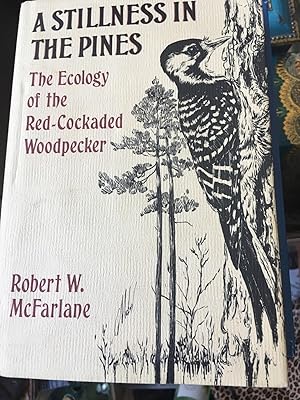Synopsis
Examines the battles over an endangered woodpecker species whose survival depends on the survival of valuable resin pine trees
Reviews
With this carefully reasoned brief for the protection of the red-cockaded woodpecker, an endangered bird native to the pinewoods of the Southeastern U.S., biologist McFarlane combines ecology and activism. His approach makes the book a pleasing contrast to those technical treatments of the ecology of animals and plants that ignore human encroachment, as well as those picture books and essays long on sentiment but short on information about the reasons behind the conflicting needs of foresters and birds. Science, however, is difficult to present, and lay readers will have to wade through unfamiliar terminology ("desiccation-resistant," "tarsi," "homologous") and research reports. Yet the rewards are ample, for the author brings us closer to "viewinging the world from the perspective of a woodpecker" and successfully documents that the plight of the red-cockaded woodpecker is attributable to the Forest Service's failure to follow the mandates of the Endangered Species Act. Photos not seen by PW.
Copyright 1991 Reed Business Information, Inc.
Densely packed, adroitly written life history of the red- cockaded woodpecker by McFarlane, a ``woodpecker expert and conservationist.'' Red-cockaded woodpeckers are perfectly adapted to the pine forest--once enormous--that started at the Gulf Coast, ran a thousand miles to the Atlantic, and up to the Chesapeake Bay. Unique among woodpeckers, they are cooperative: Nonbreeding males are ``helpers,'' assisting the breeding pair by incubating the eggs, or by brooding and feeding the nestlings. Their home is a deep cavity drilled in a live pine, with resin wells--a strong snake repellent--ringed around the entry hole. What caused this species to be put on the endangered list in 1968? Their perfect adoption to the longleaf pine forest, McFarlane says, exposed them to timber companies that clear-cut huge acreages for pulpwood (used for making paper). In 1975, the Fish and Wildlife Service convened a five-man symposium (including a timber-company representative and a forester for the Service, neither of whom considered the species endangered) to draft a ``Recovery Plan'' for the bird. The plan emerged in 1979 and was immediately embroiled in proposals and counterproposals, one problem being that listing of endangered species halted during the Reagan Administration. At this time, no new plan has been approved and the woodpeckers continue to disappear. Although the climax here is the ``Peckerwood Politics'' that have led to the woodpecker's imperilment, McFarlane's discussions of avian territoriality, breeding, nesting, and anatomy have great depth, expanding our understanding of a single species into a broad appreciation of ecology. (Photographs--not seen.) -- Copyright ©1991, Kirkus Associates, LP. All rights reserved.
This commendable book tells the story of the decline of the red-cockaded woodpecker, a specialized inhabitant of mature Southeastern pine forests. McFarlane, a veteran professional ornithologist, is also a good writer with a fine sense of outrage and humor. Drawing from his research and that of many others, he engagingly summarizes the history of Southern forestry and lumbering, which, combined with the special requirements of these birds, threatens them with extinction. Along the way, the practices of several federal agencies, industry, and politicians come in for rigorous scrutiny. McFarlane also expertly describes the biology and life history of the red-cockaded and other woodpeckers. Complicating an already complex situation, in 1989 Hurricane Hugo devastated the habitat of the largest remaining population of these unique birds. A fascinating story, well told.
- Henry T. Armistead, Thomas Jefferson Univ. Lib., Philadelphia
Copyright 1991 Reed Business Information, Inc.
"About this title" may belong to another edition of this title.

